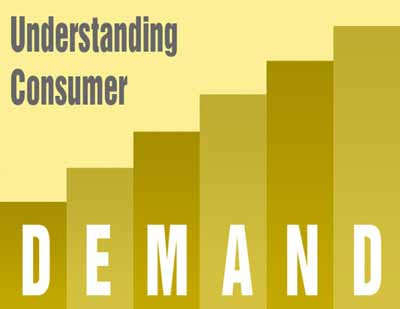How to handle consumer demands after the pandemic

Much about life after the pandemic is unknown. As the rollout of COVID-19 vaccinations continues across the globe, the world is beginning to emerge from the pandemic. That emergence should be good for businesses, even if they aren’t sure what consumer demand will be like in the months ahead.
Predicting consumer demand is an inexact science in the best of times. Such predictions could prove even harder in a post-pandemic world. No one knows how much staying power pandemic-related changes will have. For example, consumers who grew accustomed to ordering takeout from eateries that previously did not offer to-go service may want to continue doing so even after it’s once again safe to enjoy meals in crowded restaurants. That could make it hard for restaurant owners to determine staffing needs, and some may struggle to decide if they should keep practices implemented during the pandemic in place in the months and years ahead.
No two businesses are the same, so there’s no one-size-fits-all solution for business owners who must try to plan for consumer demand after the pandemic. However, businesses can try various strategies in an effort to meet consumer demand after the pandemic.
• Solicit consumer input. Consumers are as different as the businesses they support. Business owners in the midst of a full reopening can solicit consumer input as they prepare for what’s ahead. Gauge comfort levels with in person shopping and ask customers about their experiences during the pandemic. This can be a good way to see what worked and didn’t work over the last year-plus, which can help business owners make more informed decisions about how to connect with customers after the pandemic.
• Ease into reopening. Demand may not immediately reach pre-pandemic levels. Despite widespread availability of vaccines, health risks remain. Public health agencies like the World Health Organization have noted that those risks won’t immediately recede with vaccinations. That could mean consumers remain somewhat hesitant, while others who may have lost their jobs during the pandemic may adjust their spending habits, even if they’ve since found new jobs. Easing into reopening gives business owners an opportunity to survey the new landscape and avoid overcommitting before they realize what demand will be like.
• Prepare for increased demand. Though it’s important that projections remain realistic and reflect consumers’ potential hesitancy to spend, it’s also vital that business owners recognize the potential for considerably higher demand. That’s especially significant for businesses whose chief competitors did not survive the pandemic. Business owners should develop a plan to meet sudden and sizable consumer demands if their competitors are no longer around or only offering limited services.
No one knows what consumers’ mindsets will be after the pandemic. A measured approach can help businesses make a smooth transition from operating in a pandemic to opening doors once the pandemic has ended.

